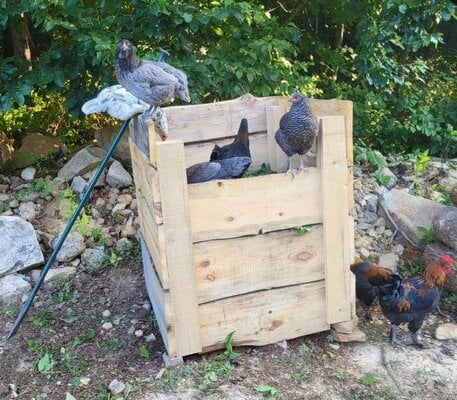- Jun 2, 2019
- 69
- 91
- 131
Hi!
After raising chickens for fun for the last few years, I have started the journey into sustainability and raising my own chickens for meat as well as eggs.
I started with a small seperate flock of marans and ameracaunas with the idea of using the extra roos for meat and keeping the hens for eggs. So far, I've processed a few extra maran roos and have been pretty pleased with the breed.
I like the idea of a heritage, dual purpose bird that is a good forager. I was wondering if anyone had a recommendation or two on other breeds that fit this best. I don't mind slow growth-most important to me is their ability to forage and their hardiness.
Thanks so much!
After raising chickens for fun for the last few years, I have started the journey into sustainability and raising my own chickens for meat as well as eggs.
I started with a small seperate flock of marans and ameracaunas with the idea of using the extra roos for meat and keeping the hens for eggs. So far, I've processed a few extra maran roos and have been pretty pleased with the breed.
I like the idea of a heritage, dual purpose bird that is a good forager. I was wondering if anyone had a recommendation or two on other breeds that fit this best. I don't mind slow growth-most important to me is their ability to forage and their hardiness.
Thanks so much!
Attachments
Last edited:



